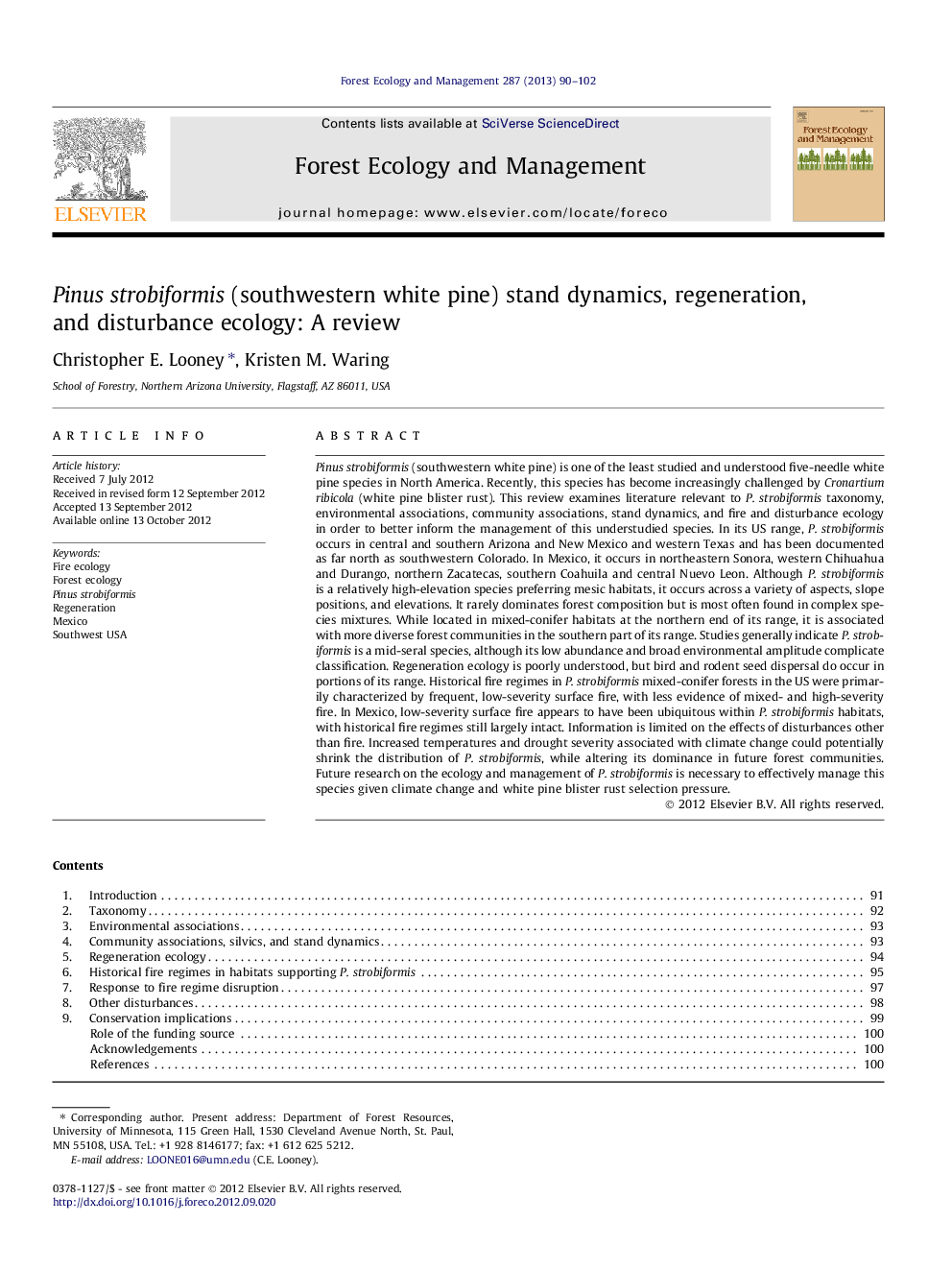| کد مقاله | کد نشریه | سال انتشار | مقاله انگلیسی | نسخه تمام متن |
|---|---|---|---|---|
| 87297 | 159243 | 2013 | 13 صفحه PDF | دانلود رایگان |

Pinus strobiformis (southwestern white pine) is one of the least studied and understood five-needle white pine species in North America. Recently, this species has become increasingly challenged by Cronartium ribicola (white pine blister rust). This review examines literature relevant to P. strobiformis taxonomy, environmental associations, community associations, stand dynamics, and fire and disturbance ecology in order to better inform the management of this understudied species. In its US range, P. strobiformis occurs in central and southern Arizona and New Mexico and western Texas and has been documented as far north as southwestern Colorado. In Mexico, it occurs in northeastern Sonora, western Chihuahua and Durango, northern Zacatecas, southern Coahuila and central Nuevo Leon. Although P. strobiformis is a relatively high-elevation species preferring mesic habitats, it occurs across a variety of aspects, slope positions, and elevations. It rarely dominates forest composition but is most often found in complex species mixtures. While located in mixed-conifer habitats at the northern end of its range, it is associated with more diverse forest communities in the southern part of its range. Studies generally indicate P. strobiformis is a mid-seral species, although its low abundance and broad environmental amplitude complicate classification. Regeneration ecology is poorly understood, but bird and rodent seed dispersal do occur in portions of its range. Historical fire regimes in P. strobiformis mixed-conifer forests in the US were primarily characterized by frequent, low-severity surface fire, with less evidence of mixed- and high-severity fire. In Mexico, low-severity surface fire appears to have been ubiquitous within P. strobiformis habitats, with historical fire regimes still largely intact. Information is limited on the effects of disturbances other than fire. Increased temperatures and drought severity associated with climate change could potentially shrink the distribution of P. strobiformis, while altering its dominance in future forest communities. Future research on the ecology and management of P. strobiformis is necessary to effectively manage this species given climate change and white pine blister rust selection pressure.
► We review the literature on Pinus strobiformis. This understudied species is increasingly imperiled by the invasive fungal disease, Cronartium ribicola.
► P. strobiformis rarely dominates species composition and appears mid-seral.
► Regeneration appears augmented by animal seed dispersal in at least parts of its range.
► P. strobiformis habitats were historically subject to mostly low or mixed severity fire.
Journal: Forest Ecology and Management - Volume 287, 1 January 2013, Pages 90–102